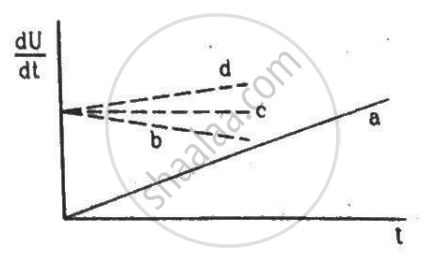Advertisements
Advertisements
प्रश्न
A constant current i is passed through a resistor. Taking the temperature coefficient of resistance into account, indicate which of the plots shown in the figure best represents the rate of production of thermal energy in the resistor.

उत्तर
Plot (d) is correct.
When current passes through a resistor, the temperature of the resistor increases due to the heat produced in it.
H = i2Rt,
where i = current flowing through the resistor
R = resistance of the resistor
t = time for which the current is flowing
With the increase in the temperature of the resistor, its resistance is also increased. The rate of production of thermal energy in the resistor of the circuit is given by the following relation:-
\[\frac{dU}{dt} = \frac{d}{dt}( i^2 Rt) = i^2 R\]
where i = current flowing through the resistor
R = resistance of the resistor
Rate of production of thermal energy in the resistor is directly proportional to the resistance. So, due to increase in resistance, \[\frac{dU}{dt}\] also increases linearly, which is best represented by plot d.
